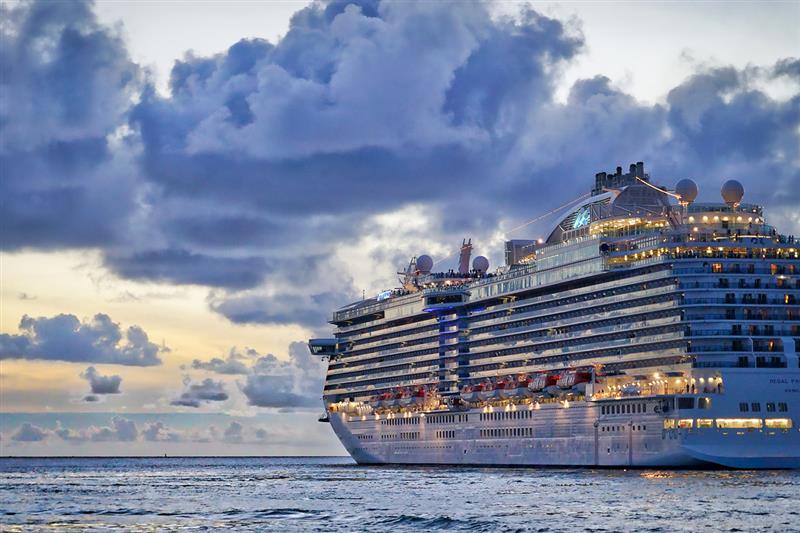The stats are in, and it's increasingly clear that sustainability is in demand.
According to a 2024 report from travel-advisor network Virtuoso, 42% of luxury travelers surveyed say they are willing to pay more to support environmentally friendly practices.
This green streak is especially evident among the younger generations of travelers, with 57% of Gen Z and 54% of millennials prioritizing environmentally responsible travel (compared to 37% of Gen X and 27% of baby boomers).
The cruise industry, unfortunately, has a perception problem. Many cruise lines are seen as environmentally destructive, and that just won’t fly in 2025. Despite the bad rap, cruise lines continue to make important strides to improve their environmental policies and reduce their greenhouse gas emissions. It can be difficult to market your vessel when more and more people are trying to be environmentally conscious.
But cruise lines are picking up the slack. They’re taking strides to become more eco-friendly, and reduce their carbon footprint. They’re taking strides to become more eco-friendly, and reduce their carbon footprint. Modern sustainable cruise ships can achieve a significant reduction in carbon emissions, as this online CO2 calculator demonstrates.
What was seen as cutting edge on cruise ships just over a decade ago is now basic and expected. There’s been progress, but some cruise lines are still lagging behind.
Here are nine things cruises can do to be more sustainable.
See also:
-
Gen Z and millennial travel trends: Do they really care about sustainability?
-
Going green with authenticity: operating a sustainable hotel in 2024
-
Check the facts on travel and tourism’s impact on sustainability
1. Advanced water-waste treatment technology
Cruise lines can implement new technology that allows them to treat sewage water on board. Traditionally, contaminated water has been released during sailing, or at port. That’s not good enough. Water needs to be treated well enough to safely be released back into the ocean.
Contaminated water can directly affect marine life, and indirectly affect the humans they interact with. Some cruise lines are great, with systems that even apply to oily bilge water. But others don’t have wastewater policies at all.
2. Reducing waste
A medium-sized cruise ship can produce up to 7 tons of waste per day. That’s 14,000 pounds of garbage. Cruise lines have committed to reducing this number by using more recycled materials, and eliminating single-use plastics on board. Say goodbye to plastic straws, stirrers and extra packaging.
By incorporating new waste-removal methods, materials are sorted more efficiently. Some ships even donate reusable materials to at-need communities in port.
Reducing waste is more than just a sum of activities. It creates an environment of sustainability which impacts crew, passengers and those on shore.
3. Cleaner exhaust
Exhaust is one of the biggest environmental concerns when it comes to cruise ships and marine vessels.
Cruise ships transport over 25 million passengers a year. That’s a lot of people sailing all over the world. And that means a lot of CO2 emissions. Luckily, vessels can use dual-fuel or hybrid engines to produce cleaner exhaust and reduce carbon emissions and air pollution.
Some cruise lines are even researching biodegradable fuel for their ships by working directly with scientists.
Another great option is to install an exhaust-cleaning system. Although quite expensive, these help clean sulfur compounds from the ship’s engine exhaust. Cleaner exhaust means cleaner air for everyone.
4. Alternative power
We’re talking solar panels and wind power. Cruise ships have crazy energy needs. Just imagine how many rooms are on a large cruise ship. The lighting alone is a massive energy drain. While solar panels can’t yet cover the entire demand, they can help make a dent — especially on those sunny paradise routes.
Don’t have access to hours of sunlight? Consider investing in wind power. Some cruise lines have turned to rotor sail systems to help cut emissions. So your engines can get a bit of a lift.
5. Upgraded service technology
Your passengers want to make responsible choices, and they expect the same from you. At the same time, they still expect a premium experience. With improved technology, you don’t have to choose. You can deliver the best passenger experience while saving money and the environment.
By outfitting vessels with stunning LED lighting, tinted windows and high-efficiency appliances, you can reduce energy consumption while maintaining services.
You can even go above and beyond by offering services like PressReader to give your passengers a little piece of home through premium newspapers and magazines. Not to mention, it will save you thousands on physical newspapers and magazines and shrink your ecological footprint.
6. Crew and passenger engagement
The latest service technology is crucial for improving environmental sustainability on cruise ships. However, the people on-board can sometimes undo this work. That’s why so many ships now have environmental officers. They provide environmental training to all crew, and oversee onboard compliance with environmental requirements. They’re also in charge of creating crew and passenger-facing presentations to educate and inspire.
Because having a conscious crew can go a long way to enhancing your environmental efforts. They’re also your on-deck advocates. They can lead the charge, and encourage other passengers to enjoy their vacation in a more environmentally friendly way.
Passengers can make a huge difference to the ship's footprint — whether there’s a few hundred, or a few thousand. If everyone is committed to doing things like turning off the lights when they leave their room, reusing towels and using a refillable water bottle, the little things can make a huge difference.
7. Sustainable food sources
Many cruises are looking at their supply chains and demanding more sustainable food products to make an impact past their physical ship. Not only does this mean a healthier experience for passengers, but it means stronger relationships with local farmers and communities at key ports.
Cooking oil can also be recycled and offloaded at port, where it can be converted to bio-diesel fuel. That's pretty cool.
8. Optimized ship design
This is more of a long term — and expensive — solution, but one that can make a significant impact. Some ship designs are influenced by improvements in technology — specifically by optimizing hull to reduce drag. This can improve fuel efficiency by up to 10%.
9. Special projects
Through partnerships with environment groups, government agencies and universities, some cruise ships have installed devices that monitor ocean water quality and other climate information. They send this data to partners via satellite to give them information about ocean pollution, climate change and weather patterns.
Some cruise lines also have local partnerships at ports where they partake in beach cleanups and assist local businesses.
Green is gold
There’s an increased trend towards going green. And why wouldn’t you? Going green (and obtaining Green Marine certification) can help your cruise line stand out and attract new audiences. Green operations and sustainable practices are becoming a shared international goal and a priority to many consumers.
Not only that, but money saved from green initiatives can be placed back into programs to research green energy solutions and support clean water initiatives in local communities.
It’s a no-brainer. It is true — marine vessels have fallen behind. They haven’t been held to the same standard as road vehicles when it comes to becoming more environmentally friendly.
But that means there’s an opportunity to become better, to make smarter choices and to deliver a more sustainable future.








